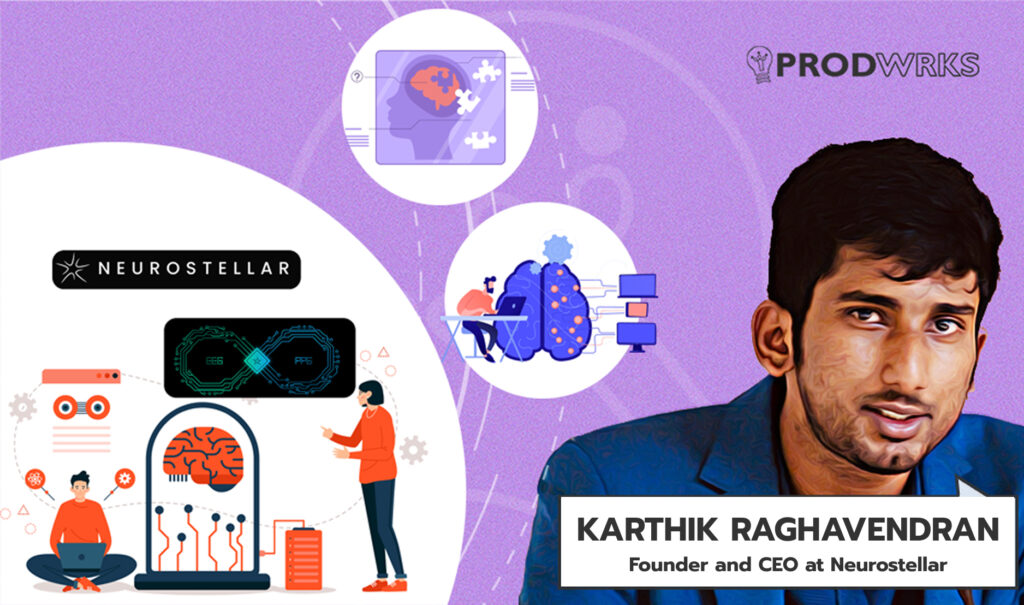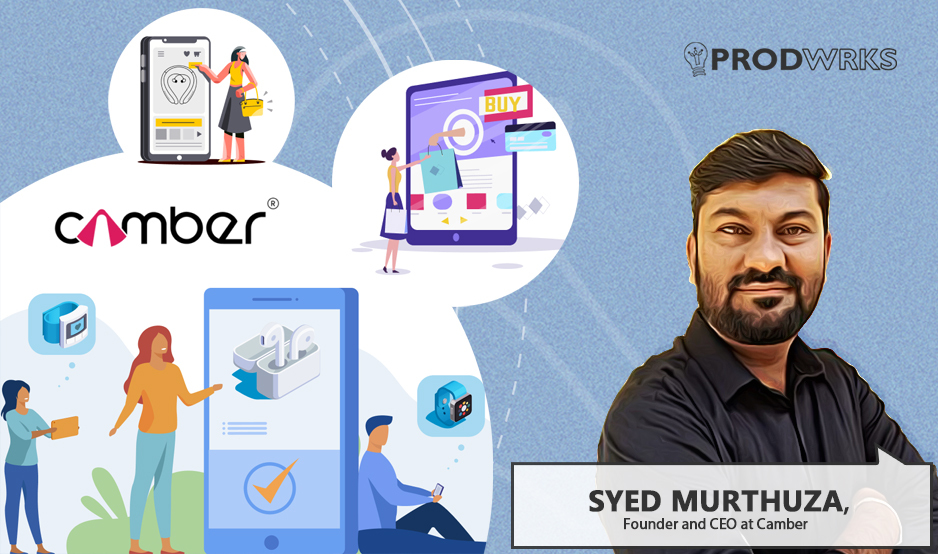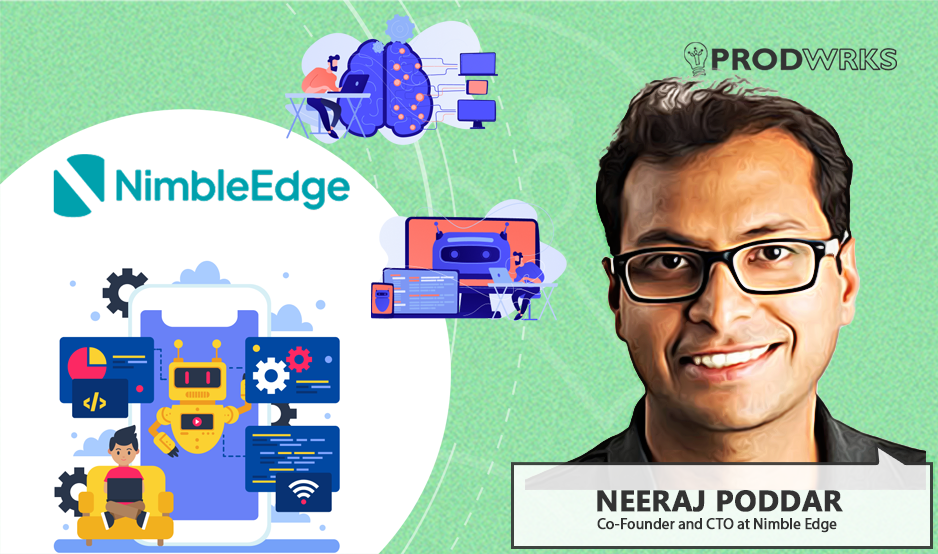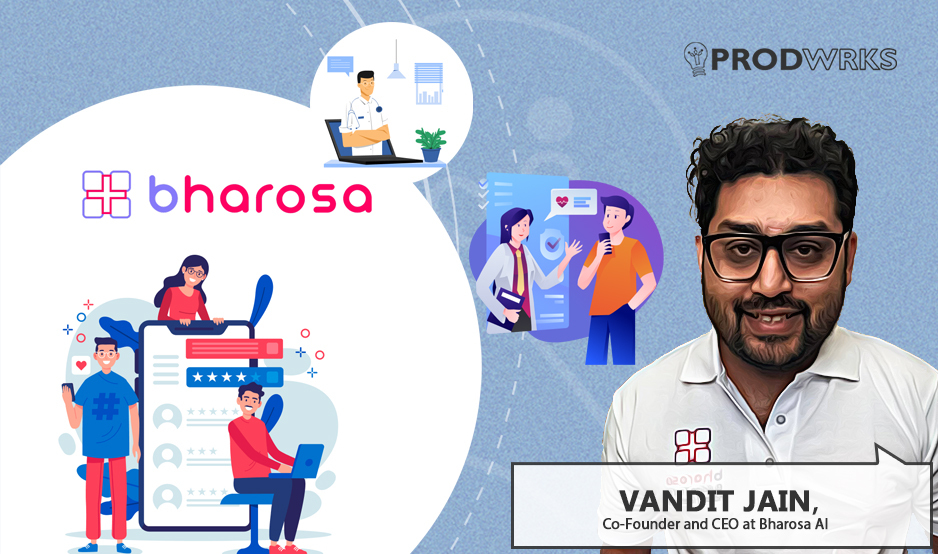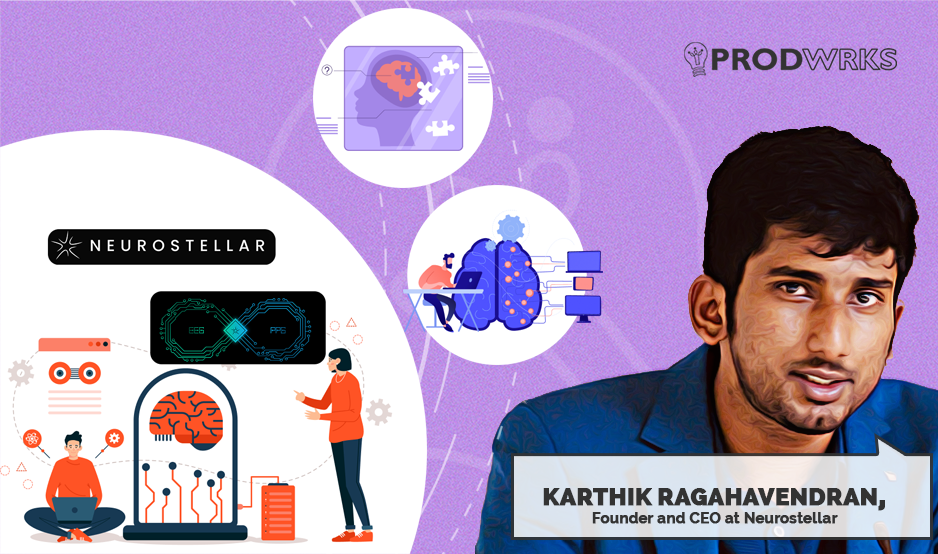
Most people tracking their health today have a smartwatch or fitness band. But when it comes to tracking the mind there’s almost nothing that goes beyond vague guesses. Mental performance still remains largely invisible, even for people whose careers depend on it and that’s the gap Neurostellar is trying to close.
Founded by Karthik Raghavendran and Dhanushya Sree in 2021, Neurostellar is an IIT-M incubated startup, building a fitness tracker for brains and shaping a new product category in mental performance tech.
Their flagship product is Orbit, a smart headband that combines EEG (Electroencephalography) for tracking brain activity and PPG (Photoplethysmography) for measuring heart rate and breathing patterns. It provides real-time insights into stress, focus, and mental fatigue.
Since launch, Orbit has been tested by over 500 beta users and is all set for launch in the mass markets. The company has so far raised investment of over $150,000 from a group of angels including Ather Energy’s co-founders Swapnil Jain and Tarun Mehta
The Roots of Neurostellar
Karthik’s journey into the world of neuroscience traces back to his high school days, where passion and curiosity drove him to dive deep into the subject. He was intrigued by the idea that by understanding how the mind works, we could help people gain better control of their thoughts, decisions, and daily lives.
After finishing his undergraduate studies, Karthik began working with a neurologist in Chennai whose work in neuropsychiatry deeply interested him. During this time he had an idea to build a wearable device that could measure brain activity and provide insights into a person’s mental state.
Karthik recalls, “The inspiration came from wanting to understand your mental state and use it to reach peak performance every day. I felt that if we could do this, then business would be a great tool to scale it to people around the world. So we spent about eight months working on the idea, building some prototypes. That’s how we got started with Neurostellar.”
Riding the Wearables Wave
"We saw an exponential rise in wearable device adoption, like smartwatches and bands and from a market perspective. So we thought this was the right time to bring in another health tracker focused on mental fitness rather than just physical fitness. That was the idea."
Karthik saw this moment as the ideal window to introduce Orbit, which complemented the existing ecosystem of physical health trackers by bringing mental health tracking into the mix.
Like sleep trackers that transform how people think about rest by showing long-term patterns, Orbit aims to do the same for mental states by helping users understand how their stress and focus levels shift over weeks and months. This kind of longitudinal awareness, Karthik realised, was what lacked in the market in the first place
“Everyone knows how they slept when they wake up,” Karthik explains. “But what makes sleep wearables so useful today is the ability to look at trends over a month that gives you a much better perspective on your sleep. That’s exactly what we’re doing for stress and focus.”
Tracking Mental Performance in High-Stakes Environments
Orbit primarily targets elite athletes, biohackers, and corporate executives. It can track their stress, focus, and mental fatigue across different phases of activity (before, during, and after). For executives the activity might be deep work or meetings and for athletes it might be the games that they’re playing.
These metrics are measured continuously for a period of three to four weeks to help them tap more easily into their flow state.
Karthik explains “For athletes, the goal is to stay in the zone or the flow state when they step into a game and they're open to anything that helps them get there. That includes not just being physically warmed up but also being mentally prepared before the game and mentally recovered after. Recovery is crucial because it affects how well they perform in the next one."
To measure focus, mental fatigue, and cognitive load Orbit uses EEG signals. It tracks beta waves to monitor attention, and the theta to beta ratio to understand mental effort and strain during performance.
For recovery and relaxation, Orbit combines EEG alpha waves with PPG-based heart rate variability (HRV). This gives a complete view of how well the brain and body are recovering after intense activity.
At the end of each cycle, users receive a monthly report that helps them build awareness of how their mental state has trended over time. Alongside this, Orbit offers actionable suggestions aimed at helping users stay in a focused state for longer durations.
“In the peak performance market, staying at your best isn’t a nice-to-have. For these users, not being in the right mental state can cost them,” Karthik explains.
How Orbit Refines What It Measures
“Initially we were focusing on just the raw neural signals, heart rate, and breathing rate,” Karthik explains. “We were even showing some stress scores, but they weren’t very useful. People didn’t really know what to do with that data.”
Karthik says, “Say your sleep score ranges from 80 to 90 over two to three weeks. The question then becomes what do I do with this data? That’s where actionable insight comes in. We help users understand what that number means for them and how they can work toward an aspirational goal, like sustaining a score of 90.”
“We’re still early in this. But the current version of our report is far more mature than our earlier one where it gives you clear pointers on what you can do in the coming weeks to improve scores for the future.”
Shaping the Experience Before Users Know What to Ask
“People here haven’t seen this kind of data before. They don’t have a reference point. So it’s up to us to understand what they need by watching how they use it, not just waiting for them to tell us,” says Karthik.
“People pay a monthly subscription for three months. That includes the device, the app, the reports, and neuroscientist-guided insights,” says Karthik.
Conversational AI to Talk to Data
Neurostellar is keeping track of two major shifts that could reshape how people measure and improve their mental performance. The first is “wearables” and other seamless technologies that can capture mental and physical states in real time.
The second is Conversational AI and GenAI. As large language models get better, they’re changing how users interact with products. Neurostellar is exploring how these tools can make its feedback useful.
“The conversational LLM space plays a big part for consumers to interact more with the goods and services and have a better relationship with products. So that's exactly why conversational elements will impact each and every industry. It’s the same for our industry as well.”

